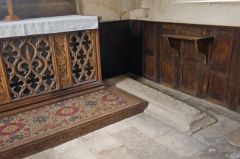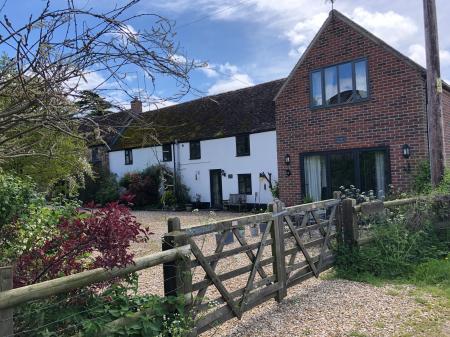
The most interesting feature at Tarrant Crawford is a series of 14th-century wall paintings which cover much of the nave. The paintings are relatively intact and undamaged, making them somewhat of a rarity among early medieval wall paintings. A small section of painting in the chancel may date to the 13th century, which is extremely early for this type of church decoration in England.
The south wall paintings are in two bands. The upper depicts scenes from the life of St Margaret of Antioch, while the lower band is a morality tale meant to illustrate the dangers of focussing on worldly wealth and material possessions. The paintings on the north wall are a mix of Biblical themes, including the weighing of souls and depictions of various saints.
Several medieval coffin lids are set into the floor. These are thought to be abbesses and nuns of Tarrant Abbey, though one is said to represent Bishop Richard Poore, Bishop of Durham and Salisbury, who was born locally. Poore is best known as the man who built Salisbury Cathedral. Another grave slab may be a memorial to Joan of Scotland, daughter of King John and the first abbess at Tarrant.
Tarrant Abbey was an immensely important and powerful Cistercian nunnery, and the church at Tarrant Crawford may have been built as a lay chapel to the abbey. The church is rarely used for worship and is cared for by the Churches Conservation Trust, who keep it open at most times. It is an absolute delight to visit.







 We've 'tagged' this attraction information to help you find related historic attractions and learn more about major time periods mentioned.
We've 'tagged' this attraction information to help you find related historic attractions and learn more about major time periods mentioned.




